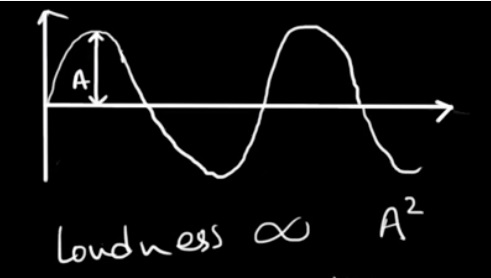

Understanding the factors that contribute to the loudness of sound will give us valuable insights into the richness and variety of the auditory world. So, let's embark on this exploration together!
What is Loudness?

Loudness is the perception of the intensity or strength of sound. It refers to how loud or soft a sound appears to our ears. While related to the physical property of amplitude, which measures the strength of sound waves, loudness is subjective and varies from person to person. It is influenced by various factors, including the amplitude of the sound waves and the sensitivity of our ears.
The Role of Amplitude:
Amplitude plays a crucial role in determining the loudness of sound. Amplitude signifies the peak extent of displacement experienced by particles in a sound wave from their resting position. In simpler terms, it measures the height or strength of the sound wave. Greater amplitude corresponds to a louder sound, while smaller amplitude results in a softer sound. The relationship between amplitude and loudness is not linear, meaning a doubling of amplitude does not necessarily result in a perception of double the loudness. Our ears have a complex sensitivity that affects how we perceive sound intensity.
Decibels (dB):
To quantify and measure the loudness of sound, we use a unit called the decibel (dB). The decibel scale is logarithmic, representing a relative comparison of sound intensity to a reference level. The reference level commonly used is the threshold of hearing, which is the softest sound that the average human ear can detect. Louder sounds are assigned positive decibel values, while softer sounds have negative decibel values. For example, a whisper might be around 20 dB, while a rock concert can reach 100 dB or more.
Factors Affecting Perceived Loudness:
Apart from amplitude, several factors influence our perception of loudness. These factors include the distance between the sound source and the listener, the characteristics of the environment (such as reflection and absorption of sound), and individual variations in hearing sensitivity. The same sound can appear louder or softer depending on these factors. For instance, a sound may be perceived as louder when it is closer to us and quieter when it is far away.
Protecting Your Hearing:
It's essential to be mindful of the loudness of sounds we encounter to protect our hearing health. Prolonged exposure to excessively loud sounds can lead to hearing damage or loss. Using ear protection, reducing exposure to loud environments, and being aware of safe listening practices are important for maintaining healthy hearing.
The loudness of sound adds depth and richness to our auditory experiences. By understanding the relationship between amplitude, perception of loudness, and the role of decibels, we gain valuable insights into how sound impacts our daily lives. Remember to protect your hearing and appreciate the vast range of sounds that surround us—from the gentle whispers to the thunderous symphonies.
